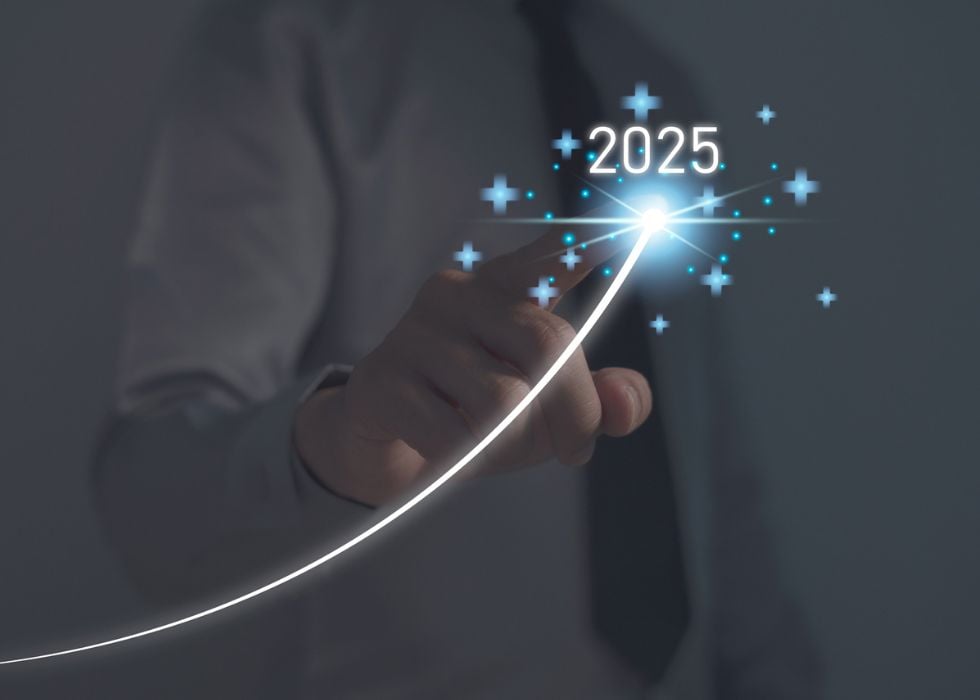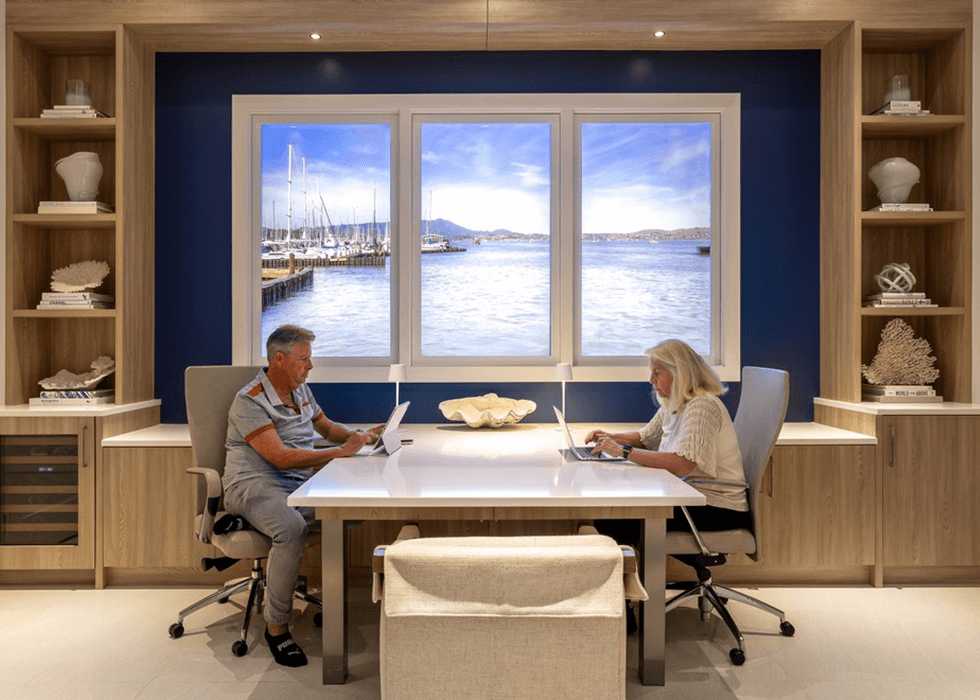
6 AV Trends to Look Out For in 2025
We’re on the cusp of a transformative era, with technological innovations reshaping how content is created, distributed, and consumed. Let’s count down 6 of the most highly anticipated trends that will impact AV and IT in 2025.
And if you're attending InfoComm this year, check out our Emerging Technology in AV course on Saturday, June 7, to stay ahead of the rapidly evolving AV landscape!
Top Trends for 2025
Trend #6: Hybrid Simplification
During a conference call or virtual meeting, it can be frustrating when you spend the first couple of minutes troubleshooting a video connection or trying to figure out how to share your screen on a confusing system. To address this, organizations are investing more in meeting spaces that prioritize ease of use and efficacy. Technology with user-friendly interfaces ensures smooth transitions between in-office and remote work.
These updates work to minimize technical frustrations while fostering collaboration, allowing teams to focus more on meaningful interactions. So, expect to see more hybrid simplification on the horizon.
Trend #5: Enhanced Connectivity
Driven by faster, more reliable mobile network connectivity, the expansion of 5G technology promises significant advancements in AV experiences. This advanced infrastructure will improve the quality of AV systems, taking care of challenges like latency and buffering while ensuring smoother streaming and seamless data transfers.
Speedier and more stable connections will enable enhanced real-time interactions across distances, making virtual meetings, webinars, and training sessions more effective. High-bandwidth applications such as augmented reality (AR) training and live virtual events will also become more accessible, creating even more opportunities for innovation.
Trend #4: Energy-Efficient Solutions
As organizations prioritize eco-friendly practices, sustainability in AV solutions is taking center stage. Businesses are implementing energy-efficient equipment and resource optimization strategies to curtail environmental impact and meet goals. This includes reducing power consumption during non-peak hours, designing products with recyclable materials, implementing smarter energy management systems, and more.
With the demand for green technology increasing, businesses must integrate sustainable solutions into their AV strategies to remain competitive and environmentally responsible in 2025 and beyond.
Trend #3: Hybrid Computing
Hybrid computing’s role in the tech industry is tackling complex problems. It combines various computing resources to enhance performance, enabling technologies like AI to exceed current limitations. In the context of cloud computing, hybrid computing typically refers to a hybrid cloud infrastructure, which combines private and public clouds. Companies like Microsoft and IBM are already innovating in this space, offering hybrid solutions that unify public and private cloud resources.
Gartner highlights that this approach will create: "Highly efficient transformative innovation environments.”
Combining AV equipment like cameras, microphones, and screens with cloud-based tools and services allows AV systems to be more flexible and scalable. In large display systems like video walls or digital signage, hybrid computing can deliver content from both local and cloud-based sources. By using a mix of local processing power and cloud-based services, hybrid AV systems improve efficiency, reduce latency, and offer more robust, scalable, and cost-effective solutions for modern AV needs, especially in hybrid work environments, live events, and collaborative spaces. So, expect to see more of it in the future.
Trend #2: Ambient Invisible Intelligence
Ambient invisible intelligence refers to technology that’s integrated into the environment to enable a more intuitive experience. It combines advanced sensors, data analysis, and machine learning into everyday environments while operating quietly in the background. And it can work to improve work environments.
While there are still some privacy and security concerns to iron out, it aims to merge digital intelligence with physical spaces to support a higher quality of life. In AV spaces and offices, it can create an efficient, responsive, and immersive environment that enhances productivity, comfort, and user experience. Starting in 2025 and beyond, you should see more of this technology integrated into work environments.
What is the Top AV Trend for 2025?
Trend #1: Agentic AI
Gartner, the global research and advisory company that provides insights and tools to help businesses make informed decisions about technology, strategy, and operations, names agentic AI as the top tech trend for 2025.
Agentic AI is primarily assisting the shift from query-and-response systems to autonomous machine agents capable of performing enterprise-related tasks without human guidance. Agentic AI aims to increase efficiency and productivity by enabling software agents to take on complex, decision-intensive tasks.
Gartner predicts that: "By 2028, at least 15% of day-to-day work decisions will be made autonomously through agentic AI, up from 0% in 2024.”
But what does this mean for you? Well, the realization and potential of agentic AI has led major companies to focus on its development. Let’s look at what others are already doing.
Companies like Zoom, Microsoft Teams, and Google Meet are beginning to incorporate more intelligent automation. These systems can automatically optimize settings based on meeting context, participants, and content, which is a form of agentic AI at work.
Others like Crestron, Extron, and Savio are said to use AI to automate the management of AV equipment and meeting room resources. And many businesses are beginning to use chatbots powered by agentic AI, which can autonomously handle customer service, help desk support, and more.
Companies are increasingly integrating AI into cameras and microphones to adjust focus, zoom, and sound quality based on the number of people in a room or the type of activity. For example, adaptive sound technology can adjust audio levels and acoustics based on the room’s layout and ambient noise levels often utilizing the help of AI.
When it comes to business, agentic AI can do a lot. It can autonomously schedule meetings based on participants' availability, room capacity, and equipment requirements. It can autonomously create documents, slides, or videos based on previous meetings or user preferences. And the list goes on.
Gartner added, “This motivation is driving both enterprises and vendors to explore, innovate, and establish the technology and practices needed to deliver this agency in a robust, secure and trustworthy way.”
In Closing
These trends highlight the growing emphasis on sustainability, AI, and more that will redefine the future of AV technology in 2025 and beyond.
In general, AI is a huge trend that has been popping up everywhere. Check out this AVIXA TV video to see how we can use AI for AV.









